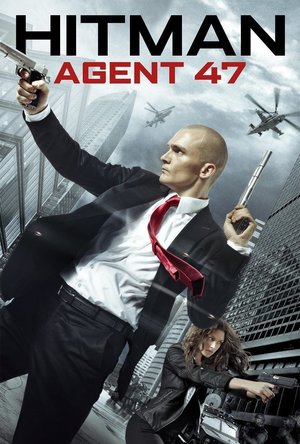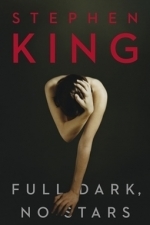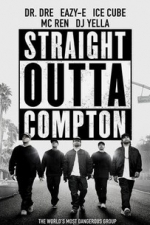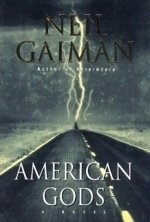Search
Mothergamer (1568 KP) rated the PlayStation 3 version of Catherine in Video Games
Apr 3, 2019
First of all, let me say that while I know a lot of you love Atlus games as much as I do, Catherine is not a typical video game. In fact, it is a sliding block puzzle game with a great story woven in. If you're not big on puzzle games, Catherine may not be the video game for you. However, if you genuinely enjoy challenging puzzles and are a puzzle game addict like myself, Catherine definitely gives you your money's worth.
Catherine is much more than a puzzle game however. The story is definitely what brings everything together. It addresses adult situations, things that people go through or suffer such as, fear of commitment, infidelity, and about how some people are childish and won't take responsibility for their actions. It's a unique title and simply an adult video game because it involves adult situations and the issues we have as we get older.
The story centers around Vincent Brooks who has a girlfriend by the name of Katherine. They're both in their early thirties and Katherine's biological clock is ticking which she hints at to him by telling him her mother has asked where the relationship is going. Vincent isn't sure he's ready for that level of commitment yet and says as much to his buddies he hangs out with at the local bar.
One night while hanging out at the bar mulling over a sliding block nightmare he had the night before, he runs into a beautiful blonde bombshell by the name of Catherine. Apparently after blacking out, he wakes up after another nightmare to find that she has spent the night. Of course, Vincent freaks out completely. Now, Vincent has to make a choice between lust and love, have good times with Catherine or finally make a commitment to Katherine.
Vincent's nightmares continue and even worse, people actually seem to be dying in them.Healthy men in their twenties and thirties are found dead in their beds and there seems to be no reason for it. A rumor goes around that it is a woman cursing all these men for being unfaithful. Is the rumor true? Vincent has to find out, climbing for his life one nightmare at a time.
Vincent Brooks In His Nightmare
Vincent's nightmares are the heart and soul of the puzzle sections. Every night, he wakes up surrounded by sheep, with horns growing out of his head and a voice taunting him to come up. There are items along the way that help you with the puzzles, but many obstacles as well involving sheep that are trying to climb also as the world crumbles behind them. You have a reason to climb, survival and the inner demons Vincent is struggling with. If you don't climb, you die. One example of this is, there's a giant monster version of Vincent's girlfriend Katherine, trying to grab him and smash the heck out of him. If Vincent's not quick enough to climb all those blocks to the top, he will surely die.
Every night, there's a different puzzle with each nightmare and depending on how quickly you get to the top and how many points you get, you can win gold, silver, or bronze trophies. The complexity of the puzzles is very interesting and the story is well written and captures your attention perfectly. It sounds silly, but you actually feel a sense of accomplishment when you have figured out a rather difficult puzzle.
Solve The Puzzle Or Die Trying
This brings up the next point. Some of the puzzles in Catherine will make you want to punch every living thing in your path. The difficulty level is excruciatingly high on a variety of them. There's no shame in playing a game on the Easy level. I know I will try a game on Easy first, to get a feel for the controls, to see how well the game plays, and to have a chance to genuinely enjoy the story that is being told. Then I will play again working on all the achievements and trophies, and improving my game scores. This is what I did with Catherine and some of those puzzles made me want to punch whoever designed it right in the face. A challenge is all well and good and definitely in a puzzle game, but when the game is on the Easy setting and it's still making you weep bitter tears of defeat, that is a big problem. Don't believe me? Apparently the difficulty level was such a destroyer of worlds, that the Japanese gamers complained about it. Frankly, that said quite a lot to me about how high Atlus raised the bar on these puzzles. The complaints were so many, that Atlus promised to put a patch in that would make the game much less difficult on Easy. I do understand their reasoning that they wanted the game to be challenging, so that players could reap huge rewards when they solved a puzzle, but the Easy setting in a game should be just that, easy and not throw people into the deep end with a sink or swim attitude. That's what the Hard and Nightmare settings are for.
However, there is hope! There is a secret trick to get to a Very Easy mode. It's a secret that Atlus put in to make the game a cake walk for players. When you access the main menu of the game, highlight Golden Playhouse and hold the back or select button for a few seconds. The screen will flash with a prompt telling you Very Easy mode has been activated. From there, the puzzles are much easier, and you can actually enjoy the story without those resentful feelings and frustration. It is a nice touch, and I give kudos to Atlus for caring enough about fans of their games to put it in there, because they do want people to enjoy the game.
Overalll, the game is great. The story is well thought out and acted out well with a great voice cast. There are also interesting characters that Vincent meets in the bar and can talk to, even help them with their issues. There is also a fun mini game in Catherine, called Rapunzel that is a sliding block puzzle game also that gives you pretty good rewards when you beat all the levels, along with opportunities to unlock music from various Atlus games and the Catherine game to play on the jukebox in the bar.
I have always loved the artwork in Atlus video games and Catherine is no exception. Right down to the animated short cut scenes, everything is colorful, seamless, and you really appreciate how everything ties together. The music, the voice cast, and the game play all mesh into a fantastic video game. Catherine is definitely a game worth having in any gaming enthusiast's collection and absolutely worth playing more than once.
Catherine is much more than a puzzle game however. The story is definitely what brings everything together. It addresses adult situations, things that people go through or suffer such as, fear of commitment, infidelity, and about how some people are childish and won't take responsibility for their actions. It's a unique title and simply an adult video game because it involves adult situations and the issues we have as we get older.
The story centers around Vincent Brooks who has a girlfriend by the name of Katherine. They're both in their early thirties and Katherine's biological clock is ticking which she hints at to him by telling him her mother has asked where the relationship is going. Vincent isn't sure he's ready for that level of commitment yet and says as much to his buddies he hangs out with at the local bar.
One night while hanging out at the bar mulling over a sliding block nightmare he had the night before, he runs into a beautiful blonde bombshell by the name of Catherine. Apparently after blacking out, he wakes up after another nightmare to find that she has spent the night. Of course, Vincent freaks out completely. Now, Vincent has to make a choice between lust and love, have good times with Catherine or finally make a commitment to Katherine.
Vincent's nightmares continue and even worse, people actually seem to be dying in them.Healthy men in their twenties and thirties are found dead in their beds and there seems to be no reason for it. A rumor goes around that it is a woman cursing all these men for being unfaithful. Is the rumor true? Vincent has to find out, climbing for his life one nightmare at a time.
Vincent Brooks In His Nightmare
Vincent's nightmares are the heart and soul of the puzzle sections. Every night, he wakes up surrounded by sheep, with horns growing out of his head and a voice taunting him to come up. There are items along the way that help you with the puzzles, but many obstacles as well involving sheep that are trying to climb also as the world crumbles behind them. You have a reason to climb, survival and the inner demons Vincent is struggling with. If you don't climb, you die. One example of this is, there's a giant monster version of Vincent's girlfriend Katherine, trying to grab him and smash the heck out of him. If Vincent's not quick enough to climb all those blocks to the top, he will surely die.
Every night, there's a different puzzle with each nightmare and depending on how quickly you get to the top and how many points you get, you can win gold, silver, or bronze trophies. The complexity of the puzzles is very interesting and the story is well written and captures your attention perfectly. It sounds silly, but you actually feel a sense of accomplishment when you have figured out a rather difficult puzzle.
Solve The Puzzle Or Die Trying
This brings up the next point. Some of the puzzles in Catherine will make you want to punch every living thing in your path. The difficulty level is excruciatingly high on a variety of them. There's no shame in playing a game on the Easy level. I know I will try a game on Easy first, to get a feel for the controls, to see how well the game plays, and to have a chance to genuinely enjoy the story that is being told. Then I will play again working on all the achievements and trophies, and improving my game scores. This is what I did with Catherine and some of those puzzles made me want to punch whoever designed it right in the face. A challenge is all well and good and definitely in a puzzle game, but when the game is on the Easy setting and it's still making you weep bitter tears of defeat, that is a big problem. Don't believe me? Apparently the difficulty level was such a destroyer of worlds, that the Japanese gamers complained about it. Frankly, that said quite a lot to me about how high Atlus raised the bar on these puzzles. The complaints were so many, that Atlus promised to put a patch in that would make the game much less difficult on Easy. I do understand their reasoning that they wanted the game to be challenging, so that players could reap huge rewards when they solved a puzzle, but the Easy setting in a game should be just that, easy and not throw people into the deep end with a sink or swim attitude. That's what the Hard and Nightmare settings are for.
However, there is hope! There is a secret trick to get to a Very Easy mode. It's a secret that Atlus put in to make the game a cake walk for players. When you access the main menu of the game, highlight Golden Playhouse and hold the back or select button for a few seconds. The screen will flash with a prompt telling you Very Easy mode has been activated. From there, the puzzles are much easier, and you can actually enjoy the story without those resentful feelings and frustration. It is a nice touch, and I give kudos to Atlus for caring enough about fans of their games to put it in there, because they do want people to enjoy the game.
Overalll, the game is great. The story is well thought out and acted out well with a great voice cast. There are also interesting characters that Vincent meets in the bar and can talk to, even help them with their issues. There is also a fun mini game in Catherine, called Rapunzel that is a sliding block puzzle game also that gives you pretty good rewards when you beat all the levels, along with opportunities to unlock music from various Atlus games and the Catherine game to play on the jukebox in the bar.
I have always loved the artwork in Atlus video games and Catherine is no exception. Right down to the animated short cut scenes, everything is colorful, seamless, and you really appreciate how everything ties together. The music, the voice cast, and the game play all mesh into a fantastic video game. Catherine is definitely a game worth having in any gaming enthusiast's collection and absolutely worth playing more than once.

The Collected Stories of Lydia Davis
Book
The Collected Stories of Lydia Davis is the complete collection of short fiction from the...
Night Reader Reviews (683 KP) rated Ten Minutes On Mars in Books
Jan 10, 2020
Honest Review for Free Copy of Book
Ten Minutes on Mars by Jonathan Fisher is a small collection of eighteen short stories. Some, or rather, most of these stories are a bit on the twisted side so reader be warned. On a deeper level this book appears to explore the darker side of humanity and how we are monsters to each other and to animals.
Keeping with more of a horror theme this book starts off with a ghost in a graveyard although the ghost doesn't make another appearance until the end of the book. Readers are then taken on a hunting trip through the eyes of the prey. A truly scary experience. During the course of this book, the people who live in the cracks in the pavement or as it seemed to be the down and out or homeless are brought to light as well. Basically these are the people that the majority of society pretends don’t exist.
This journey takes readers to the far reaches of space abroad The Ascension. It is on The Ascension where tattoos can be used to control people and others are able to shapeshift. In our technologically advanced society, many wonder about what will happen when AI becomes so advanced that it sees itself as human or tries to take over. That is what happens in another one of the stories to a worker on another planet. Finally, readers see the lengths that a mother will go to in order to avenge a close friend and protect her own child. So sit back and relax as you are taken on a creepy trip deep into the monstrous world that we call humanity, in a town where monsters are normal.
What I liked best was that many of the stories overlapped with one another in some way. While they all take place in the same town the connections go deeper than just that. This book could almost read as each story being just a chapter instead of a stand-alone story. What I did not like was how often this book was confusing to me. I had to reread areas to clear up and be sure what I just read was correct. Some of the confusing points were just because of me misunderstanding the wording. On the other hand, some areas such as when it talks about a decapitated dolphin head being sentient and a vampire still confuse me.
The target readers for this book are adults and young adults. Specifically, those who like fantasy and horror should enjoy this book the most. There is cussing, murder, and the overall tone was not for children to read, even if it wasn’t that long. A high school student should be able to handle this book if they wanted to read it. I rate this book 2 out of 4. After reading this book a second time I might increase my score but for now, this is the best I can offer it. I found this book to be enjoyable yet at the same time, I did not really like it. On the surface I found some of the stories to be confusing or even pointless. When I looked deeper I found it had more depth about the nature of humans than I previously thought, although I do not know if this was the author’s intention.
https://www.facebook.com/nightreaderreviews
Keeping with more of a horror theme this book starts off with a ghost in a graveyard although the ghost doesn't make another appearance until the end of the book. Readers are then taken on a hunting trip through the eyes of the prey. A truly scary experience. During the course of this book, the people who live in the cracks in the pavement or as it seemed to be the down and out or homeless are brought to light as well. Basically these are the people that the majority of society pretends don’t exist.
This journey takes readers to the far reaches of space abroad The Ascension. It is on The Ascension where tattoos can be used to control people and others are able to shapeshift. In our technologically advanced society, many wonder about what will happen when AI becomes so advanced that it sees itself as human or tries to take over. That is what happens in another one of the stories to a worker on another planet. Finally, readers see the lengths that a mother will go to in order to avenge a close friend and protect her own child. So sit back and relax as you are taken on a creepy trip deep into the monstrous world that we call humanity, in a town where monsters are normal.
What I liked best was that many of the stories overlapped with one another in some way. While they all take place in the same town the connections go deeper than just that. This book could almost read as each story being just a chapter instead of a stand-alone story. What I did not like was how often this book was confusing to me. I had to reread areas to clear up and be sure what I just read was correct. Some of the confusing points were just because of me misunderstanding the wording. On the other hand, some areas such as when it talks about a decapitated dolphin head being sentient and a vampire still confuse me.
The target readers for this book are adults and young adults. Specifically, those who like fantasy and horror should enjoy this book the most. There is cussing, murder, and the overall tone was not for children to read, even if it wasn’t that long. A high school student should be able to handle this book if they wanted to read it. I rate this book 2 out of 4. After reading this book a second time I might increase my score but for now, this is the best I can offer it. I found this book to be enjoyable yet at the same time, I did not really like it. On the surface I found some of the stories to be confusing or even pointless. When I looked deeper I found it had more depth about the nature of humans than I previously thought, although I do not know if this was the author’s intention.
https://www.facebook.com/nightreaderreviews

Read4Kids - Kids learn to read in 20 easy lessons
Education and Book
App
Read is a 20-lesson program designed to help kindergarten and elementary school age children (4–8...
Gareth von Kallenbach (980 KP) rated Hitman: Agent 47 (2015) in Movies
Aug 6, 2019
Video game movies get an incredibly bad rep these days. I think it’s because people go into them expecting them to be something there not. The expectation of these films to follow the rules of our reality, instead of the reality of the game itself, which is not always the same. I think that it is for this reason that many reviewers out there, including some that I saw the film with, will lambaste this movie in their write-ups. Now full disclosure, I may be one of the few who actually enjoyed the first Timothy Olyphant Hitman from 2007. I own the DVD. But did Hitman: Agent 47 surpass it, or will it join it down at the very bottom of everyone’s list? Read on.
Agent 47 begins by giving background on what the “Agent” program is: a research project to genetically enhance humans to make them the perfect weapons; however, Litvenko (Clarán Hinds), the man who unlocked the key to the genetics behind the program, morally disagreed with the direction the program was going in and went on the run with his young daughter. Fast forward to present day where we find Katia (Hannah Ware) search for Litvenko, but she doesn’t know that he is her father. She just know that she needs to find him. The problem is that Syndicate International, the corporation trying to restart the agent program, is searching for her believing that she knows where her father is. They send an agent of their own, John Smith (Zachary Quinto), to find her and protect her, though he is not exactly what he seems to be. Enter Agent 47 (Rupert Friend) who reveals the nefarious plans of Syndicate International, and begins to unlock the secrets to Katia’s past, and her own enhanced abilities.
Now remember, this is based on a very popular video game franchise. The rules of reality that we know do not necessarily apply. You already need to take into account the fact that “Agents” exist where they have been genetically altered to not feel fear, love, sadness… anything really. Genetically altered humans to be faster, smarter, instinctual, and emotionless. But people tend to forget this when we start to see what Syndicate International has done in their own attempts to create an agent. I do not want to give much away on that, as some of it plays big to the plot, but just keep an open mind.
So was it good? I believe so. I am a big fan of the highly successful game franchise. Even though I liked the 2007 film, it did bother me that it didn’t feel like the game I had come to love and play over and over. Agent 47 hits that feel right on the nose. The mission he is sent on is fraught with scenarios that would be right in the game, and the story line is similar enough to some of the plots we have seen, that the movie was really enjoyable. The action sequences were great, the story was decent, and Friend managed to portray the stoic agent well enough that I almost thought I was watching the game for a short time.
All in all, this is a good film if you are a fan of the game franchise. Also, if you can go into it with an open mind about some of the ideals and plotlines involved in the movie, you will love it. Some do not know this, but the late Paul Walker was originally set to star in the role as Agent 47. Knowing this going into the film, I could pinpoint certain lines of dialogue that may have been written with him in mind, and it made me wonder if the film would have been better, or worse, received than its current form. Sadly, we will never know.
If you want some good, if not over the top, action sequences, along with an interesting take on the Hitman universe, definitely check out this film. This is one that is going into my collection upon home release.
Agent 47 begins by giving background on what the “Agent” program is: a research project to genetically enhance humans to make them the perfect weapons; however, Litvenko (Clarán Hinds), the man who unlocked the key to the genetics behind the program, morally disagreed with the direction the program was going in and went on the run with his young daughter. Fast forward to present day where we find Katia (Hannah Ware) search for Litvenko, but she doesn’t know that he is her father. She just know that she needs to find him. The problem is that Syndicate International, the corporation trying to restart the agent program, is searching for her believing that she knows where her father is. They send an agent of their own, John Smith (Zachary Quinto), to find her and protect her, though he is not exactly what he seems to be. Enter Agent 47 (Rupert Friend) who reveals the nefarious plans of Syndicate International, and begins to unlock the secrets to Katia’s past, and her own enhanced abilities.
Now remember, this is based on a very popular video game franchise. The rules of reality that we know do not necessarily apply. You already need to take into account the fact that “Agents” exist where they have been genetically altered to not feel fear, love, sadness… anything really. Genetically altered humans to be faster, smarter, instinctual, and emotionless. But people tend to forget this when we start to see what Syndicate International has done in their own attempts to create an agent. I do not want to give much away on that, as some of it plays big to the plot, but just keep an open mind.
So was it good? I believe so. I am a big fan of the highly successful game franchise. Even though I liked the 2007 film, it did bother me that it didn’t feel like the game I had come to love and play over and over. Agent 47 hits that feel right on the nose. The mission he is sent on is fraught with scenarios that would be right in the game, and the story line is similar enough to some of the plots we have seen, that the movie was really enjoyable. The action sequences were great, the story was decent, and Friend managed to portray the stoic agent well enough that I almost thought I was watching the game for a short time.
All in all, this is a good film if you are a fan of the game franchise. Also, if you can go into it with an open mind about some of the ideals and plotlines involved in the movie, you will love it. Some do not know this, but the late Paul Walker was originally set to star in the role as Agent 47. Knowing this going into the film, I could pinpoint certain lines of dialogue that may have been written with him in mind, and it made me wonder if the film would have been better, or worse, received than its current form. Sadly, we will never know.
If you want some good, if not over the top, action sequences, along with an interesting take on the Hitman universe, definitely check out this film. This is one that is going into my collection upon home release.
Night Reader Reviews (683 KP) rated Full Dark No Stars in Books
Apr 14, 2020
Casual Review
Full Dark, No Stars is a collection of four short stories by Stephen King. These stories include 1922, Big Driver, Fair Extension, and A Good Marriage. As Stephen King admits in the Afterword at the back of the book these four stories are disturbing and hard to read at times but they are well worth it. In these four books Stephen King explores the possibility of each person having at least one more person inside them, the person that comes out when we experience something too traumatic for our typical self to handle. What happens when this person we keep hidden deep inside of us gets let out? Can we put this person back and go on to live a normal life or does it change us forever?
1922
This story reminded me largely of Poe's Tell-Tale Heart and I am sure many other bookworms will see the resemblance between these two stories. Wilfred Leland James is a farmer living on 80 acres of land with his wife and his son. When his wife is given 100 acres of adjacent land when her father dies, Wilfred is thrilled until he learns that she plans on selling all of it off to a big company and that there is nothing he can do to stop her. She is determined to sell the land and move to the city, taking their son with her either Wilfred wants to go or not. Their respective stubbornness starts a chain of events that can only end in pain and misery for all involved.
Big Driver
Tess is a mystery writer of the sort that writes simple little mysteries often read by older ladies and their book clubs and who occasionally makes guest appearances to talk about her books. When she takes a shortcut home suggested to her after one such event she finds herself in a world that she doesn't even dare to write about. A stranger stopping to help her ends up having other plans for her and leaves her for dead after raping her multiple times. Tess manages to survive and makes her way home but the damage has been done in more than one way and she sets out to get revenge on all she believes to be involved in what happened. Is it possible though that she doesn't know the full story?
Fair Extension
Dave Streeter has cancer and doesn't have much time left to live, under a year for sure. He is extremely jealous of an old friend of his from school who seems to have it all while Dave and his family are not struggling but they also are not doing as well as what his old friend is. Then one day while heading home and contemplating his life. he sees a man along the extension by the airport with a little stand set up. This man offers Dave an extension on his life but Dave has to offer someone that he hates up to this man in exchange, not to kill him but someone must pay the price.
A Good Marriage
One day while Darcy's husband is away on business and she is looking for batteries she stubbles on a box that her husband has hidden under a table in the garage. When she tries to push the box under the table the rest of the way she pushes the box up against something that she ends up wishing she never investigated. When she looks at what the box hit she ends up discovering that her husband has been harboring a horrible secret from even before they were married but this puts her in a very bad spot. She fears no one would believe that she did not know about what he was doing until now and she also fears the stigma that the discovery will leave on their children. At the same time though she must do something about what she found out.
https://www.facebook.com/nightreaderreviews
https://nightreaderreviews.blogspot.com/
https://smashbomb.com/nightreader
1922
This story reminded me largely of Poe's Tell-Tale Heart and I am sure many other bookworms will see the resemblance between these two stories. Wilfred Leland James is a farmer living on 80 acres of land with his wife and his son. When his wife is given 100 acres of adjacent land when her father dies, Wilfred is thrilled until he learns that she plans on selling all of it off to a big company and that there is nothing he can do to stop her. She is determined to sell the land and move to the city, taking their son with her either Wilfred wants to go or not. Their respective stubbornness starts a chain of events that can only end in pain and misery for all involved.
Big Driver
Tess is a mystery writer of the sort that writes simple little mysteries often read by older ladies and their book clubs and who occasionally makes guest appearances to talk about her books. When she takes a shortcut home suggested to her after one such event she finds herself in a world that she doesn't even dare to write about. A stranger stopping to help her ends up having other plans for her and leaves her for dead after raping her multiple times. Tess manages to survive and makes her way home but the damage has been done in more than one way and she sets out to get revenge on all she believes to be involved in what happened. Is it possible though that she doesn't know the full story?
Fair Extension
Dave Streeter has cancer and doesn't have much time left to live, under a year for sure. He is extremely jealous of an old friend of his from school who seems to have it all while Dave and his family are not struggling but they also are not doing as well as what his old friend is. Then one day while heading home and contemplating his life. he sees a man along the extension by the airport with a little stand set up. This man offers Dave an extension on his life but Dave has to offer someone that he hates up to this man in exchange, not to kill him but someone must pay the price.
A Good Marriage
One day while Darcy's husband is away on business and she is looking for batteries she stubbles on a box that her husband has hidden under a table in the garage. When she tries to push the box under the table the rest of the way she pushes the box up against something that she ends up wishing she never investigated. When she looks at what the box hit she ends up discovering that her husband has been harboring a horrible secret from even before they were married but this puts her in a very bad spot. She fears no one would believe that she did not know about what he was doing until now and she also fears the stigma that the discovery will leave on their children. At the same time though she must do something about what she found out.
https://www.facebook.com/nightreaderreviews
https://nightreaderreviews.blogspot.com/
https://smashbomb.com/nightreader

The Weather Station by The Weather Station
Album Watch
On her fourth (and tellingly self-titled) album as The Weather Station, Tamara Lindeman reinvents,...
alternative folk rock

KidloLand: Kids Nursery Rhymes
Education and Games
App
KidloLand is an award-winning app for kids (1-5 yrs) with 1000+ nursery rhymes, songs, games and...
Gareth von Kallenbach (980 KP) rated Straight Outta Compton (2015) in Movies
Aug 6, 2019
The moment I heard they were making a film about N.W.A., I knew I had to see it. Like many, I didn’t listen to their music during their height of their popularity. Unlike many, I am willing to admit that. But it doesn’t mean that their music didn’t influence me in significant ways when I was in my teens. So naturally, I was excited about this movie. I only wish it would have lived up to my expectations.
Straight Outta Compton tells the story of N.W.A.’s formation, but it’s more than just that. It tells of the trials and tribulations the members of the group went through to become the icons they were. It tells of both the struggle with their oppressors, as well as each other. We start the film in 1986 with an introduction to the three main guys that everyone knows: Eazy-E (Jason Mitchell), Dr. Dre (Corey Hawkings) and Ice Cube (O’Shea Jackson, Jr.). They soon form Ruthless records putting out their first single, which gets the attention of Jerry Heller (Paul Giamatti), their future manager. The movie then tells of their rise to stardom, and ultimate falling out, all the way through to the passing of Eazy-E.
Straight Outta Compton sets out to do a lot of things, some of which it doesn’t get exactly right. Don’t get me wrong, the movie is good. It just felt… unnatural at times. The actors themselves did a great job portraying the real-life people they were representing, but I don’t think they had the chemistry as an ensemble. I noticed it really early on in the movie, when Ice Cube and Dr. Dre were at Dre’ aunt’s house. The flow of the conversation just didn’t feel comfortable. It didn’t feel like the natural conversations I had with my friends when I was around the same age, as they were putting clear distance (time) between each of the character’s lines, just so you can make out what they were saying. And Hawkings and Jackson, Jr. just seemed really awkward in delivering their lines to each other. I know that this is needed often in movies, but I have seen similar scenes in other movies where I didn’t have this feeling.
There were also many things that the movie put into your face, but then didn’t really finish telling you what it was about, or make you believe in the connection. For example, the movie starts with Dre having a girl and baby, and you see her for all of 10 seconds, and then you see her a little later when she is leaving him. Dre also has very minimal time with his brother in the beginning of the film, again a short time later they interact for a few moments on screen (over the phone), and then there is supposed to be a moving scene where Dre finds out his brother was killed. I say supposed to be because as with the film where Dre’s girl left him, you are supposed to feel something for the character here, but there wasn’t enough for you to go on. There wasn’t the emotional connection to the relationship between Dre and his girl/brother for you to feel connected to the movie and character. These are just a few examples, another could be a menacing threat to Jerry Heller at his home, but the movie never really wraps back around to it. Most people are supposed to know, or maybe you are supposed to infer from the plotline at the time, but it seemed a little abrupt to me. Now, I hear that the running time of this film, 147 minutes, is actually a far cry from the original 210 minutes. This could explain a lot of where I felt the film just kind of failed at follow through. Hopefully we get to see this on the home release.
Ultimately, this was a great movie. It was amazing to sit in the theater and listen to people sing along with the iconic songs that were released not only from the super group themselves, but even from Eazy-E, Ice Cube and others. Plus, there were many great easter eggs throughout the film, including appearances of the characters Snoop Dogg, Tupac, Warren G, Suge Knight and many others. There was plenty of humor, but still managing to portray the struggle they went through well. One of things I was worried about was O’Shea Jackson, Jr. I originally thought they only cast him as his father because of the looks, but he really did hold his own. I definitely see a future in acting, and possibly in music too, just like his father.
Should you go see it in theaters? If you are a super fan, then definitely. Even if you are not, definitely check it out as it tells a great story about what was considered at one point the most dangerous group in music. This is definitely one that will be added to my collection upon home release, especially if there is an uncut version.
Straight Outta Compton tells the story of N.W.A.’s formation, but it’s more than just that. It tells of the trials and tribulations the members of the group went through to become the icons they were. It tells of both the struggle with their oppressors, as well as each other. We start the film in 1986 with an introduction to the three main guys that everyone knows: Eazy-E (Jason Mitchell), Dr. Dre (Corey Hawkings) and Ice Cube (O’Shea Jackson, Jr.). They soon form Ruthless records putting out their first single, which gets the attention of Jerry Heller (Paul Giamatti), their future manager. The movie then tells of their rise to stardom, and ultimate falling out, all the way through to the passing of Eazy-E.
Straight Outta Compton sets out to do a lot of things, some of which it doesn’t get exactly right. Don’t get me wrong, the movie is good. It just felt… unnatural at times. The actors themselves did a great job portraying the real-life people they were representing, but I don’t think they had the chemistry as an ensemble. I noticed it really early on in the movie, when Ice Cube and Dr. Dre were at Dre’ aunt’s house. The flow of the conversation just didn’t feel comfortable. It didn’t feel like the natural conversations I had with my friends when I was around the same age, as they were putting clear distance (time) between each of the character’s lines, just so you can make out what they were saying. And Hawkings and Jackson, Jr. just seemed really awkward in delivering their lines to each other. I know that this is needed often in movies, but I have seen similar scenes in other movies where I didn’t have this feeling.
There were also many things that the movie put into your face, but then didn’t really finish telling you what it was about, or make you believe in the connection. For example, the movie starts with Dre having a girl and baby, and you see her for all of 10 seconds, and then you see her a little later when she is leaving him. Dre also has very minimal time with his brother in the beginning of the film, again a short time later they interact for a few moments on screen (over the phone), and then there is supposed to be a moving scene where Dre finds out his brother was killed. I say supposed to be because as with the film where Dre’s girl left him, you are supposed to feel something for the character here, but there wasn’t enough for you to go on. There wasn’t the emotional connection to the relationship between Dre and his girl/brother for you to feel connected to the movie and character. These are just a few examples, another could be a menacing threat to Jerry Heller at his home, but the movie never really wraps back around to it. Most people are supposed to know, or maybe you are supposed to infer from the plotline at the time, but it seemed a little abrupt to me. Now, I hear that the running time of this film, 147 minutes, is actually a far cry from the original 210 minutes. This could explain a lot of where I felt the film just kind of failed at follow through. Hopefully we get to see this on the home release.
Ultimately, this was a great movie. It was amazing to sit in the theater and listen to people sing along with the iconic songs that were released not only from the super group themselves, but even from Eazy-E, Ice Cube and others. Plus, there were many great easter eggs throughout the film, including appearances of the characters Snoop Dogg, Tupac, Warren G, Suge Knight and many others. There was plenty of humor, but still managing to portray the struggle they went through well. One of things I was worried about was O’Shea Jackson, Jr. I originally thought they only cast him as his father because of the looks, but he really did hold his own. I definitely see a future in acting, and possibly in music too, just like his father.
Should you go see it in theaters? If you are a super fan, then definitely. Even if you are not, definitely check it out as it tells a great story about what was considered at one point the most dangerous group in music. This is definitely one that will be added to my collection upon home release, especially if there is an uncut version.
Rachel King (13 KP) rated American Gods in Books
Feb 11, 2019
I have only ever read one other adult book ( I don't count Coraline) by Gaiman, which was vastly different from this book in both style and mood - Stardust. A friend recommended I read this book many years ago since I like mythology. I found this book really had not much to do with mythology in the classic sense. Instead the characters that were pulled from mythology, such as Odin, Anansi, Horus, Bast, and Ganesha, among others, behaved like has-been D-list celebrities that struggle to survive in a country that is repeatedly described as "...a bad land for gods." The powers they rarely put on display were minimal and amounted to the same kind of "magic" as a skilled pick-pocket, con-artist, or amateur magician. The few times any real power is observed is once during the sexual scene of a re-invented Queen of Sheba (I'll spare you the R-rated details) and when the gods travel "behind the scenes," a state of existence that only the gods can enter.
While the names of classical mythology fit into the category of the Old Gods, there are New Gods that have taken root in America, born from cultural obsessions that have evolved and devolved over the years, such as railroads - a man dressed as a railroad conductor, television - a voice talking through Lucille Ball on a rerun of I Love Lucy, vehicles - stocky men that seemed to resemble vehicles themselves, and internet - a short, nerdy, nervous kid, among other American fixations and stereotypes.
In addition, one of the scenic devices used throughout the plot is what Gaiman's characters describe as places of power - side-of-the-road dives that road-trippers visit for no apparent reason, such as a place boasting the largest doll collection in America or the biggest wheel of cheese. And no, Disneyworld is not one of them.
One of the things I found interesting about this Gaiman-born world is that the Old Gods only exist in the New World when regular people travel from other countries and bring their memories and practices with them, even when they don't intend to stay themselves. The gods are "born" from these average people, and even though they can be killed by others, they don't die otherwise, but instead alternately starve or thrive based on the behavior of the people who live and die in the New World. They all have counterpart manifestations of themselves in the countries they are pulled from, but one's existence does not affect the other - though they do seem to be aware of each other.
All of this is merely the background of the main plot, which centers around the activities and travels of a seemingly mortal man with a single name, Shadow. I never did "get" the one-name thing, but whatever. Through Shadow's narration, the reader learns of an impending storm - a battle between the Old Gods and New Gods, the former fighting for survival and the latter fighting for dominance. Shadow works for a mysterious "Mr. Wednesday" and is randomly haunted by his dead wife, Laura, but otherwise seems to have little drive of his own for most of the book. In fitting irony, he has his own brand of "magic" - an obsession for coin tricks to pass the time from his days spent in prison - which I could never really follow the descriptions of.
To be completely honest, I truly did enjoy this book, though I am struggling to say exactly why. Perhaps I was fascinated by the "shadowy" way that Gaiman told the story, or how he developed this over-the-hill world of gods and goddesses that better resembled America's middle and poor classes' struggles for survival, money, and influence. Some of the personal touches that Shadow's character added to the plot made him at times surprisingly endearing. In addition, the way that Shadow seemed to address the reader at the very end of the book was so satisfying that I laughed out loud and had to read it again several times. Something about that just brought the book to life for me and help me to fully appreciate the versatile style of Gaiman. This is one of those books you don't have to fully understand to fully appreciate.
While the names of classical mythology fit into the category of the Old Gods, there are New Gods that have taken root in America, born from cultural obsessions that have evolved and devolved over the years, such as railroads - a man dressed as a railroad conductor, television - a voice talking through Lucille Ball on a rerun of I Love Lucy, vehicles - stocky men that seemed to resemble vehicles themselves, and internet - a short, nerdy, nervous kid, among other American fixations and stereotypes.
In addition, one of the scenic devices used throughout the plot is what Gaiman's characters describe as places of power - side-of-the-road dives that road-trippers visit for no apparent reason, such as a place boasting the largest doll collection in America or the biggest wheel of cheese. And no, Disneyworld is not one of them.
One of the things I found interesting about this Gaiman-born world is that the Old Gods only exist in the New World when regular people travel from other countries and bring their memories and practices with them, even when they don't intend to stay themselves. The gods are "born" from these average people, and even though they can be killed by others, they don't die otherwise, but instead alternately starve or thrive based on the behavior of the people who live and die in the New World. They all have counterpart manifestations of themselves in the countries they are pulled from, but one's existence does not affect the other - though they do seem to be aware of each other.
All of this is merely the background of the main plot, which centers around the activities and travels of a seemingly mortal man with a single name, Shadow. I never did "get" the one-name thing, but whatever. Through Shadow's narration, the reader learns of an impending storm - a battle between the Old Gods and New Gods, the former fighting for survival and the latter fighting for dominance. Shadow works for a mysterious "Mr. Wednesday" and is randomly haunted by his dead wife, Laura, but otherwise seems to have little drive of his own for most of the book. In fitting irony, he has his own brand of "magic" - an obsession for coin tricks to pass the time from his days spent in prison - which I could never really follow the descriptions of.
To be completely honest, I truly did enjoy this book, though I am struggling to say exactly why. Perhaps I was fascinated by the "shadowy" way that Gaiman told the story, or how he developed this over-the-hill world of gods and goddesses that better resembled America's middle and poor classes' struggles for survival, money, and influence. Some of the personal touches that Shadow's character added to the plot made him at times surprisingly endearing. In addition, the way that Shadow seemed to address the reader at the very end of the book was so satisfying that I laughed out loud and had to read it again several times. Something about that just brought the book to life for me and help me to fully appreciate the versatile style of Gaiman. This is one of those books you don't have to fully understand to fully appreciate.





